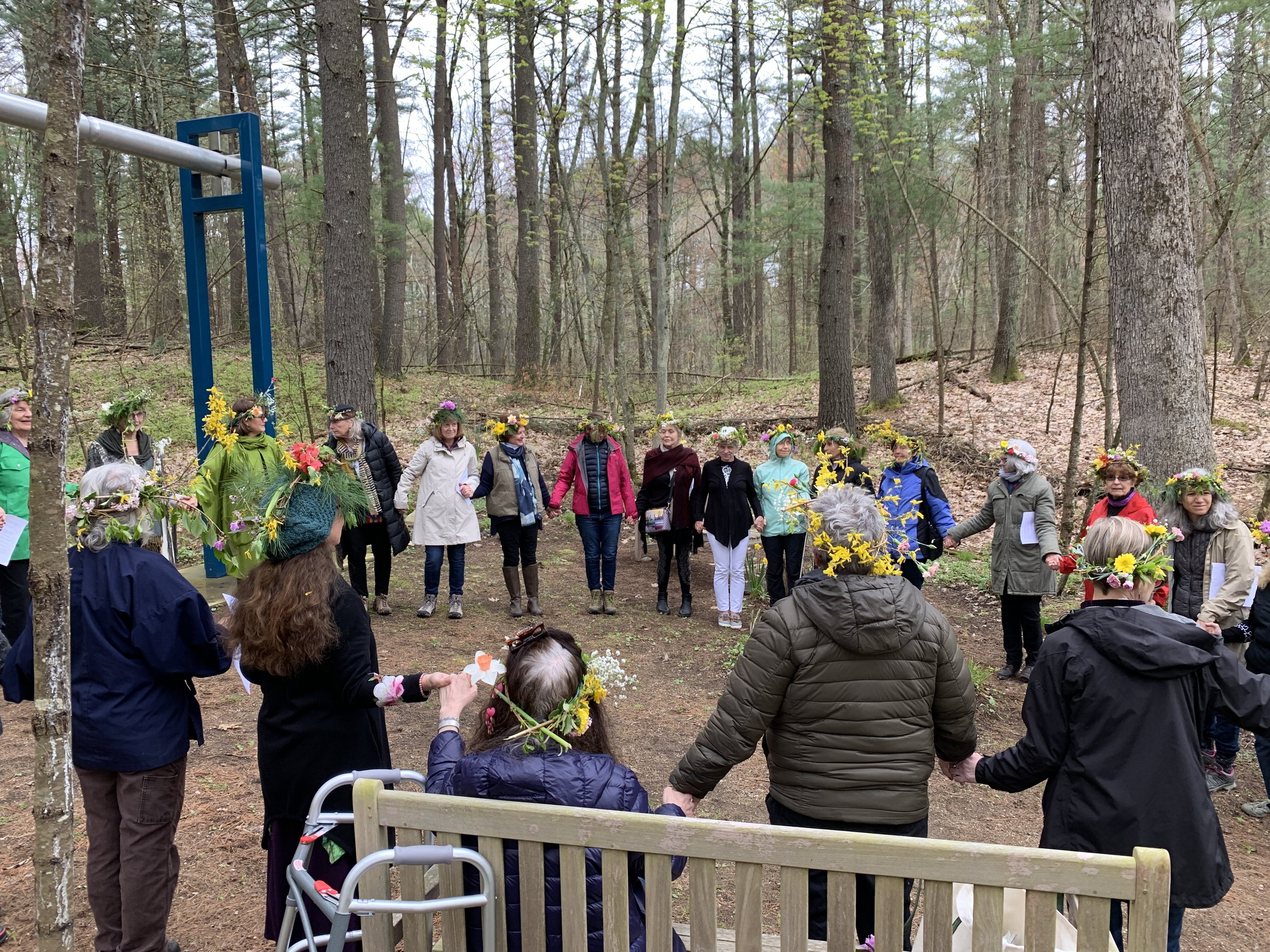Pristine apples are sizing up, their yellow skin beginning to blush pink. They’re still a little unripe, tart, but I don’t care. I eat them as soon as I can comfortably bite into their flesh. Williams Pride will ripen next, then more varieties, and yes, we will have Honey Crisp.
Honey Crisp, August 1, 2019
It’s not just apples that are thriving. We picked buckets of Goumis, oblong red berries with charming, elongated striped seeds. They’re a little tart, too, but once you start eating them, the body asks for more of their rich anti-oxidants and nutrients. I planted Goumis in the Asian pear orchard because they’re nitrogen fixers without thinking that they would become a new farm crop. Now they, too, are on our certified organic list.
Goumi Berries
Our native Red Mulberry fruited abundantly this year, and the birds had so many white mulberries, they left these dark and delicious berries for us. This tree grew from a six-inch seedling given away as an Arbor Day tree from the Friends of the Tree Warden, a group I led for many years when I lived in Groton.
When the bounty of Red Mulberry slowed, we started picking blueberries, staining our fingers with over 400 pints and counting! Next week we just might uncover some of the bushes and bequeath the fruit to the birds. It’s been a marathon of hand-picking, and we have vegetables to weed. We’re not set up for pick-your-own blueberries because of our haphazard netting system. “Next year we’ll build something more permanent,” we say, and then the season is upon us, and there is no time for a construction project.
Blueberry Offering Photo: Nadine Mazzola
In the Asian Pear orchard, our berry-lover-in-residence, Barbara Andrus, has been planting flowers and berries among the pears creating an intricate network of walking paths, bordered with new elderberries, honey berries, goji berries, herbs, milkweed, poppies, cosmos, rudebekia, veronica, herbs, and a persimmon tree; in addition to the Goumis, aronia berries, masses of lavender bee balm, red amaranth, comfrey, fall asters, mint , and of course weeds, already growing rampant. We’re mothering our first ever cherries on the autumn maturing Joel bush cherry. And on the back porch of the house is a tray of cuttings from the red mulberry, the Joel cherry, and goumis. If they root, we’ll plant them in the orchard between the apple trees.
Asian Pear Orchard, August 2, 2019
Clients from the Healing Garden, the Cancer Resource Center in Harvard, have been enjoying art and nature sessions here with Nadine Mazzola, Pam Frederick, and me. Last week we met mountain mint and picked blueberries. There was so much to share that we didn’t even get to work on our art project: this Wednesday we start with art, and we’ll cover heavy watercolor paper with colorful washes to use for our final project.
Healing Garden Session at Old Frog Pond Farm . Photo: Nadine Mazzola
In a few weeks we’ll welcome Grandfather Fire. Don David Wiley, a fully initiated shaman in both the Huichol and Nahua spiritual traditions, will loan his body as the “suit” for Tatewari, affectionately known as Grandfather Fire, to speak to us. This event is hosted by the Concord hearth of the Sacred Fire Community. A long-time member of this community, Louise Berliner, writes:
I have had the good fortune over the years to be present as Grandfather has spoken, and always feel my heart awaken in the presence of his humor, love and guidance. What a privilege to clearly hear the voice of the heart, (which is the energy of fire and which we carry in our own bodies) and align with the heart of this living world and our own human hearts! The natural world is not just alive, it is full of wisdom that we can tap into if we just slow down and listen.
If you would like to join us for this rare event or learn more, please visit the this page where you will find information, the registration link, and the schedule.
Our self-serve farm stand is open every day with blueberry jam, blueberries, blackberries, a few summer raspberries, vegetables, eggs from Hannah at Maplebrook Farmstead, and soon honey from our beekeeper, Don Rota, who has a bumper crop of honey this year from his hives at the Healing Garden and here at the farm. It’s a bountiful year, we’ll take it. We know from experience it won’t always be this way.
For those of you who follow my artistic efforts, at the end of June I completed a draft of my memoir, Naked to the Core. It felt like a birth and I feel good about the work. To get this far took six years, I’m not even thinking about how long the next stage will take. It takes many seasons to learn about a place and ourselves.
The Japanese consider there to be not four, but twenty-four seasons in a year, and each of these can be broken down further into three seasons of five days each. In the Japanese seasonal calendar, August 2 to 6 is Heavy Rain Showers. For us, it’s the season of Queen Anne’s Lace. This biennial wild carrot now carpets the orchard. Some people ‘french fry’ the flowers or toss them into salads. The root is also cooked in soups. I enjoy them swaying in the breeze under the apple trees.













